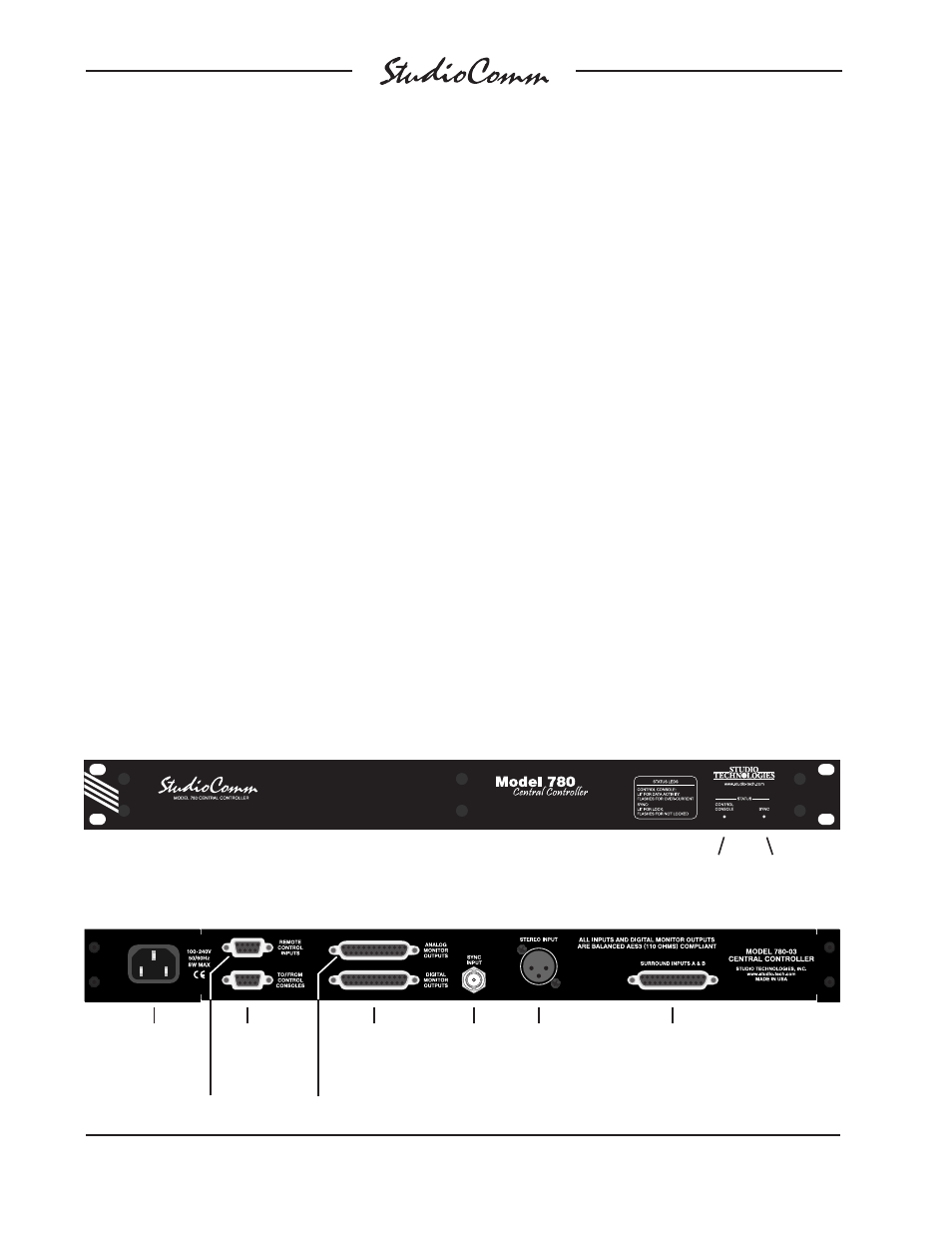Studio Technologies 780-03 V.4.15 User Manual
Page 6

Issue 1, April 2015
Model 780-03/790 User Guide
Page 6
Studio Technologies, Inc.
for Surround
Figure 1. Model 780-03 Central Controller Front Panel
Figure 2. Model 780-03 Central Controller Back Panel
Sync status
LED
Control console
status LED
Sync
input
Digital
monitor outputs
To/from
Models 790 &
71 Control
Consoles
AC mains input
Remote control inputs
Digital surround (7.1)
inputs A & B
Stereo
input
monitored. To compensate with processing
delays (latency) associated with associated
video displays up to 340 milliseconds of
input delay can be selected. For flexibility,
two delay values can be configured, allow-
ing real-time selection as desired. A number
of different signals can serve as the Model
780-03’s digital audio timing reference. For
synchronization with a master timing refer-
ence a dedicated source of word clock,
DARS (AES11), bi-level video, or tri-level
video can be connected. Alternately, the L/R
connection of the actively selected surround
or stereo input source can serve as the tim-
ing reference.
A range of digital and analog surround
(7.1) monitor outputs are provided. The
post-fader digital and analog monitor out-
puts are intended for connection to monitor
loudspeaker systems. The pre-fader digital
monitor output can be used with meter-
ing systems that require signals that aren’t
impacted by level control or other monitor-
ing functions. The digital monitor outputs are
compatible with equipment that requires
balanced AES3 digital audio signals with an
output impedance of 110 ohms and a signal
level of 5 volts peak-to-peak (Vpp).
A sophisticated bass management func-
tion is integral to the Model 780-03’s design
and can be enabled if desired. It can apply
to both the post-fader digital and analog
monitor output channels. The overall goal
of bass management is very simple: ensure
that the entire audio bandwidth of all chan-
nels can be accurately monitored. Many
loudspeaker systems have inherent low-
frequency limitations, preventing a true
sonic “picture” of the source material from
being presented. To overcome this, the low-
frequency energy from the seven channels
associated with the surround inputs and
the two channels associated with the stereo
input can be separated and routed to the
subwoofer (SUB) channel of the monitor
outputs. Several of the bass management
functions can be configured to match the
requirements of specific installations.
Analog monitor outputs
